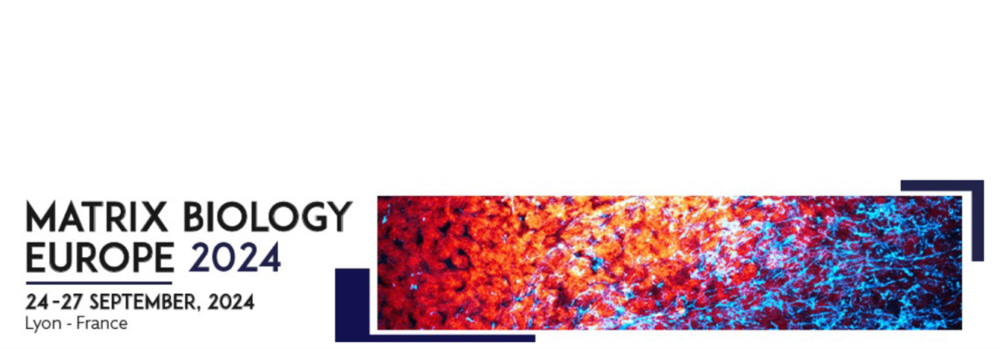Role of adam12 and adamts1 in liver fibrosis: News actors in TGF-β activity
Nathalie Theret
Members of the ADAM (A Disintegrin And Metalloprotease) family share a multi-domain organization that includes metalloprotease, disintegrin, cystein, transmembrane and cytoplasmic domains. They have been implicated in highly diverse biological processes, such as spermatogenesis/fertilization, neurogenesis, inflammatory responses and cancer. Unlike the mammalian ADAMs which are transmembrane proteins, the ADAMTSs (A Disintegrin And Metalloprotease with ThromboSpondin motifs) and ADAMTSL (ADAMTS-like molecules that lack proteolytic activity) are secreted molecules, characterized by the presence of one or more thrombospondin type 1 repeats (TSR) and are associated with extracellular matrix components. Their activity is modulated by the matrix.
Extracellular matrix remodeling plays a pivotal role in liver fibrosis and is associated with increases in the synthesis of matrix components as well as proteases, mainly synthesized by the activated hepatic stellate cells (HSCs). A search for new matrix metalloproteases involved in matrix remodeling has led our group to identify ADAM12 and ADAMTS1 as new proteases associated with liver fibrosis and cancer. In order to understand the role of ADAM12 and ADAMTS1 in chronic liver disease, we investigated their protein interaction network using both high-throughput and integrative approaches. We show that ADAM12, expressed by activated HSCs, interacts 1) with the type II receptor of TGF-β to promote TGF-β transcriptional activity; 2) with RACK1 to migrate to the cell surface where it affects the Notch signaling pathway; 3) with ILK to regulate cell adhesion/survival through a PI3K/Akt signaling pathway. These new interactions fully integrate ADAM12 within the complex TGF-β signaling network that includes Smad- and non Smad- dépendent pathways, the latter being exacerbated in liver fibrosis and cancer.
Outside the cells, we recently identified ADAMTS1 as a new interactor of the latent form of TGF- β, LAPTGF-β. Our results show that the thrombospondin motif-containing domain from ADAMTS1 induces TGF-β activation through the interaction of the ADAMTS1 KTFR peptide with the LAP-TGF-β LKSL peptide. Down-regulation of ADAMTS1 in HSCs decreases the release of TGF-β competent for transcriptional activation and KTFR competitor peptides block HSC-mediated release of active TGF-β. Using a mouse liver fibrosis model, we show that CCl4 treatment induces ADAMTS1 expression in parallel to that of type I collagen. Importantly, concurrent injection of the KTFR peptide prevents liver damage.
Taken together our data suggest that the up-regulation of ADAM12 and ADAMTS1 in liver fibrosis results in the increase of the activity of the major profibrogenic cytokine, TGF-β, thereby contributing to the progress of disease. Interestingly, the protease activity of ADAM12 and ADAMTS1 is not implicated in these new functions, in which both proteins act as scaffolding proteins. Targeting ADAM12 and ADAMTS1 might constitute a new, alternate and highly specific therapeutic strategy for the treatment of chronic liver diseases.
References
- Atfi A, Dumont E, Colland F, Bonnier D, L’helgoualc’h A, Cl.ment B, Wewer U And Th.ret N. The disintegrin and metalloproteinase ADAM12 contributes to TGF-beta signaling through interaction with the Type II Receptor. J. Cell. Biol. 2007. 178(2): 201-8.
- Bourd-Boittin K, Le Pabic H, Bonnier D, L’helgoualc’h A And Th.ret N. Rack1, a new ADAM12 interacting protein; contribution to liver fibrogenesis. J. Biol.Chem. 2008. 283(38):26000-9.
- Bourd-Boittin K, Bonnier D, Leyme A, Mari B, Tuffery P, Samson M, Ezan F, Baffet G, Theret N.Protease profiling of liver fibrosis reveals the ADAM metallopeptidase with thrombospondin type 1 motif, 1 as a central activator of transforming growth factor beta.Hepatology. 2011 Dec;54(6):2173-84.
- Leyme A, Bourd-Boittin K, Bonnier D, Falconer A, Arlot-Bonnemains Y, Th.ret N. Identification of ILK as a new partner of the ADAM12 disintegrin and metalloprotease in cell adhesion and survival (submitted). Grant support : Institut National de la Santé et de la Recherche Médicale and Ligue Nationale Contre le Cancer.
